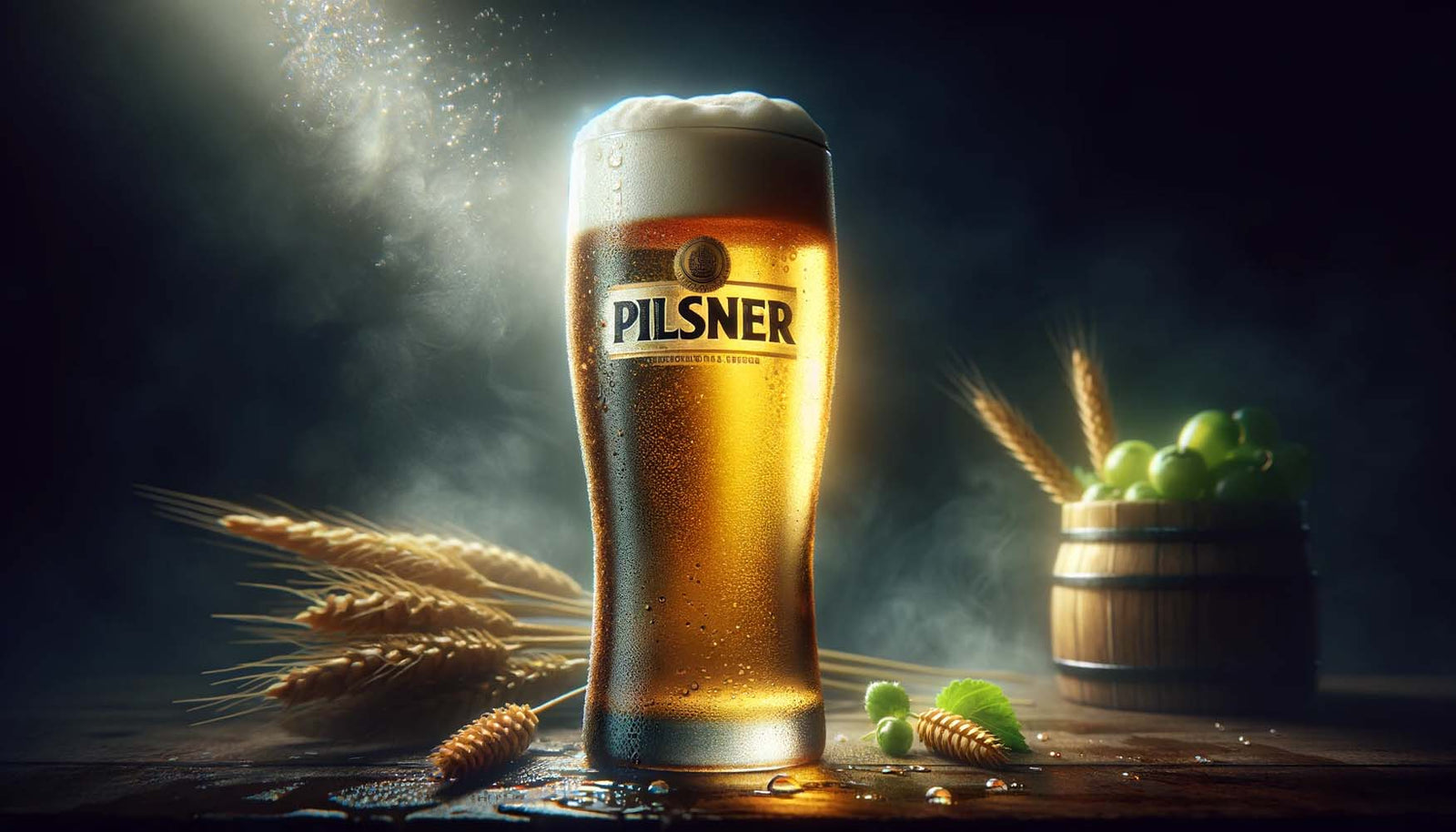Boxing weekend sale! Save up to $700! Shop now Our products ship tariff free

Brewing the Perfect Pilsner: A Step-by-Step Guide for Crafting a Classic Lager at Home
February 24, 2024 4 min read
Brewing the Perfect Pilsner: A Step-by-Step Guide for Crafting a Classic Lager at Home
Introduction
Pilsners, with their crisp, refreshing taste and golden clarity, have captivated beer enthusiasts for centuries. Originating from the Czech town of Pilsen in the mid-19th century, this beer style has become a global favorite. Beyond the choice of hops and meticulous brewing process, timing, and specifically the season of brewing, plays a pivotal role in crafting the perfect Pilsner. This article delves into the art of brewing Pilsners, highlighting why the current season offers the ideal conditions for brewing this iconic beer.
The Science of Brewing Pilsners
Key Ingredients and Their Roles
Brewing a Pilsner is a delicate balance of science and art, requiring precise ingredients and conditions. Central to the Pilsner's profile are its key ingredients: soft water, Saaz hops, specific strains of lager yeast, and Pilsner malt. Each component contributes to the beer's signature flavor and appearance, from the soft water enhancing its smoothness to the Saaz hops adding a clean, floral bitterness.
The Brewing Process: From Boiling to Fermentation
The brewing process begins with mashing, where the malt's sugars are extracted, followed by boiling with hops to add bitterness and aroma. The critical stage for Pilsners, however, is the fermentation and conditioning. Utilizing lager yeast, which thrives at lower temperatures, this phase is where the season's influence is most pronounced.
Why Now Is the Time to Brew
The current season offers unique advantages that are ideal for brewing Pilsners. Firstly, the cooler temperatures of early spring or late autumn are perfect for lager fermentation, which requires conditions typically between 9°C and 13°C (48°F to 55°F). This natural coolness aids in a slow, steady fermentation process, crucial for developing the clean, crisp characteristics of a Pilsner without the need for extensive refrigeration equipment.
Additionally, the availability of fresh ingredients plays a significant role. Hops, for instance, are harvested in late summer and early autumn. Brewing in the season immediately following the harvest allows brewers to take advantage of the freshest hops, imparting more vibrant flavors and aromas to the beer. Similarly, the malt can also exhibit a fresher quality if used seasonally, contributing to the overall depth and character of the brew.
Enjoying Your Seasonal Brew
Once your seasonal Pilsner is brewed and properly conditioned, it's time to enjoy the fruits of your labor. A well-brewed Pilsner should exhibit a brilliant gold color, with a clear appearance and a frothy head. The aroma should be a balance of floral hops and a slight malt sweetness, while the taste will lean towards a refreshing bitterness complemented by a subtle malt backbone.
Pairing your Pilsner with the right food can enhance both the beer and the meal. Classic pairings include light dishes such as grilled chicken, seafood, and salads, which complement the beer's light body and crisp finish. However, don't be afraid to experiment with spicier foods; the clean taste of a Pilsner can serve as a refreshing counterbalance to heat.
Conclusion
The art of brewing Pilsners is a testament to the importance of timing and season. By leveraging the advantages offered by the current season, brewers can craft a beer that truly captures the essence of its ingredients. As we encourage brewers to embark on this seasonal brewing journey, we hope this guide inspires both experimentation and a deeper appreciation for the Pilsner, a beer that continues to stand the test of time.
Classic Pilsner Recipe for All-Grain Brewing (5-Gallon Batch)
Ingredients:
Malt:
- 9 lbs (4.1 kg) Pilsner malt
- 1 lb (0.45 kg) Munich malt
Hops:
- 1.5 oz (42.5 g) Saaz hops (4.5% AA) for 60 minutes (bittering)
- 0.5 oz (14.2 g) Saaz hops (4.5% AA) for 15 minutes (flavor)
- 0.5 oz (14.2 g) Saaz hops (4.5% AA) for 5 minutes (aroma)
Yeast:
- Wyeast 2124 Bohemian Lager or
- Saflager W-34/70
Specifications:
- Original Gravity (OG): 1.045 - 1.050
- Final Gravity (FG): 1.010 - 1.012
- ABV: 4.5 - 5.0%
- IBUs: 35 - 40
- Color: Pale Gold
Brewing Process:
Mashing:
- Heat about 3.5 gallons (13.2 liters) of water to 155°F (68°C) for mashing.
- Add grains and maintain a mash temperature of 152°F (67°C) for 60 minutes.
- Sparge with 170°F (77°C) water to collect 6.5 gallons (24.6 liters) of wort.
Boiling:
- Bring the wort to a boil and follow the hops schedule as listed in the ingredients section.
- Boil for 60 minutes, adding hops at the specified times.
Cooling and Fermentation:
- Cool the wort to about 50°F (10°C) as quickly as possible.
- Transfer to a fermenter and pitch the yeast.
- Ferment at 50°F (10°C) for about two weeks or until fermentation activity appears to stop.
Lagering:
- After primary fermentation, rack the beer off the sediment to a secondary vessel.
- Gradually lower the temperature to 35°F (1.7°C) over a period of a few days and lager for 4-6 weeks. This step is crucial for developing the clean, crisp character of a Pilsner.
Bottling/Kegging:
- After lagering, prepare the beer for bottling or kegging.
- If bottling, carbonate to about 2.5 volumes of CO2.
- If kegging, set your CO2 pressure to achieve the same carbonation level.
Enjoying:
- Allow the beer to condition in bottles or keg for at least two weeks before enjoying.
- Serve chilled and appreciate the crisp, refreshing qualities of your homemade Pilsner!
Subscribe
Sign up to get the latest on sales, new releases and more …

